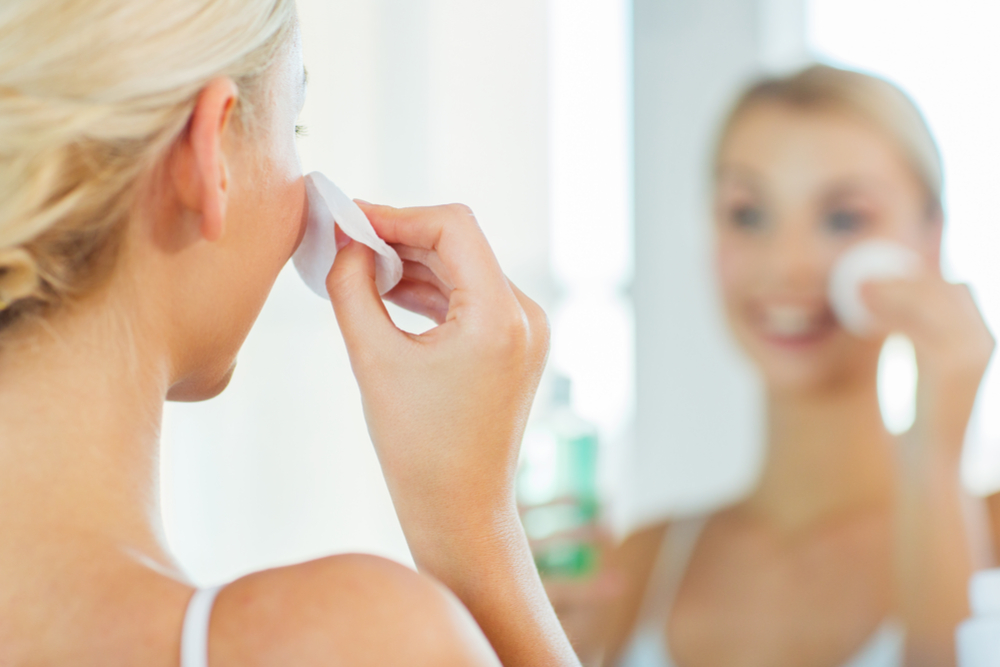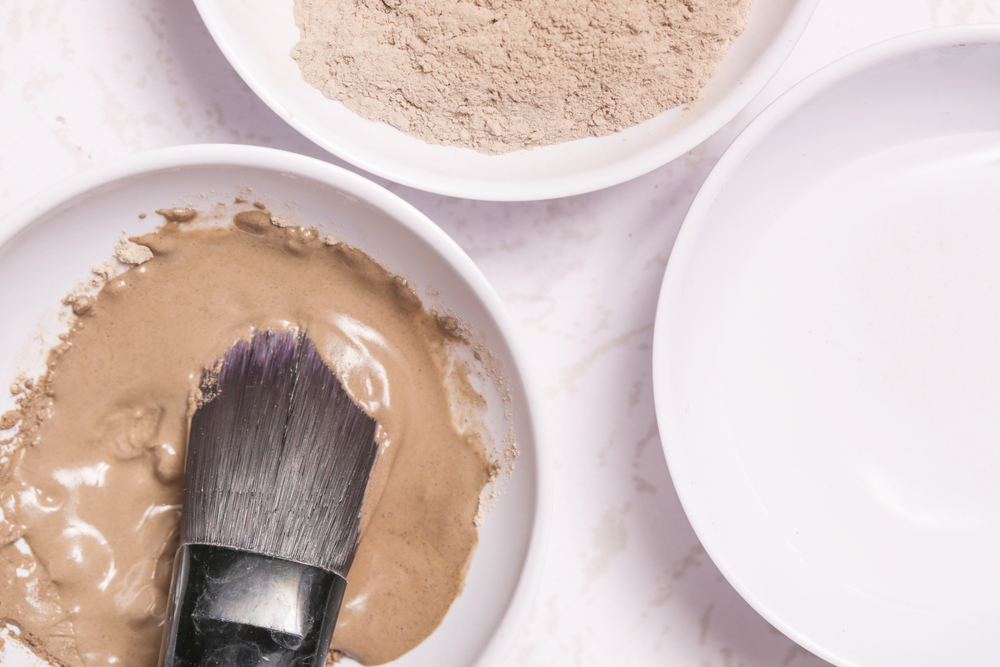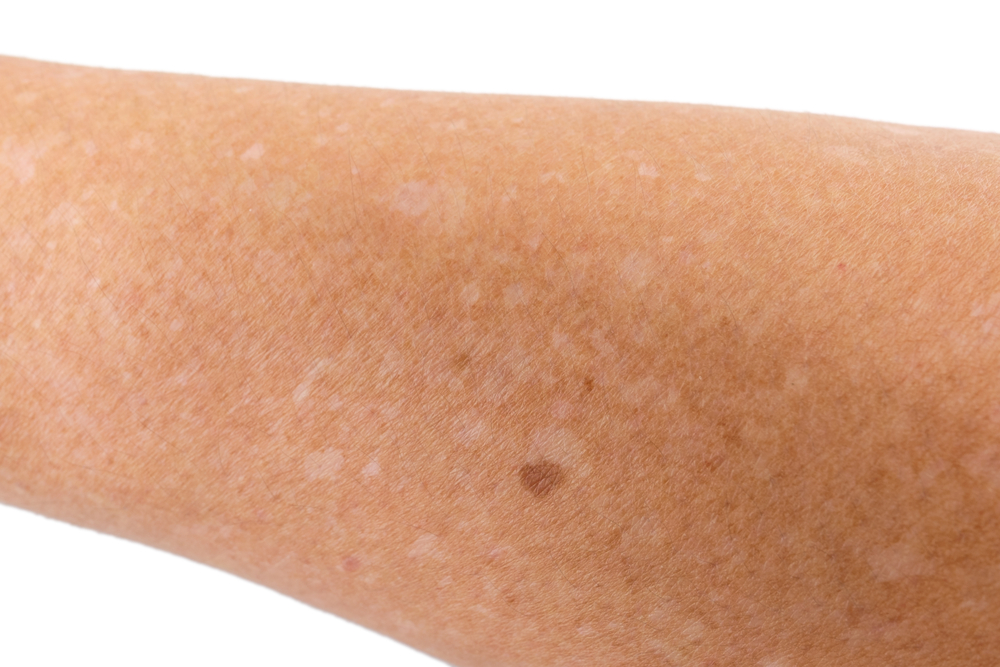- Glycolic acid is a powerful exfoliating agent.
- It can brighten and smooth skin, fade sun spots, ease congestion, and soften fine lines.
- Products containing glycolic acid include peels, toners and pads, each with their own purposes and benefits.
- For more serious skin concerns such as severe acne scarring, a chemical peel may offer superior results.
What Is Glycolic Acid?
Glycolic acid is a natural, alpha hydroxy acid (AHA) derived from sugar cane.
Alpha hydroxy acids are used for exfoliation, sloughing the upper layer from the skin to reveal brighter, fresher skin underneath.
Glycolic acid is the most common alpha hydroxy acid peel because it has the smallest molecular weight, allowing it to penetrate the skin more easily.
Glycolic Acid Peel vs. Chemical Peel
Glycolic acid peels penetrate the most superficial layer of the skin to effectively improve the appearance of blemishes, brighten skin, fade sunspots, and help soften fine lines and wrinkles. Effective results can be achieved cumulatively, with regular use over time. Glycolic acid peels require minimal downtime, and can be performed at home.
Chemical peels penetrate the skin to a medium or deep layer, injuring the skin to stimulate new growth. Medium peels generally use trichloroacetic acid, while the deepest peels use phenol.
Chemical peels target more prominent wrinkles, pigmentation irregularities and scars. The skin may take several weeks to recover, and sun exposure must be limited for several months to protect the new skin cells.
Unlike glycolic acid peels, chemical peels must be performed in an office by a dermatologist or cosmetic surgeon.
While the process is more demanding, reviews for chemical peels are generally positive.
» Learn more about the different strengths of chemical peels and which one is best for your beauty goals
Benefits of a Glycolic Acid Peel Facial
Glycolic peels have keratolytic properties, encouraging the separation of the tough outer layer of the skin. They can:
- Improve skin texture
- Reduce the appearance of pores
- Reduce the appearance of acne
- Improve the appearance of sunspots
- Brighten and lighten skin
The intensity of a glycolic peel can also be adjusted according to the concentration of the acid and quantity applied to the skin.
How to Perform a DIY Glycolic Peel At Home
If you’re budget-conscious, try making your own glycolic acid peel at home.
The key ingredients, cane sugar and plain yoghurt, can easily be sourced from your local supermarket. Be sure to use sugar with fine grains so the granules don’t harm your skin.
Find out how to formulate your own alpha hydroxy acid (AHA) peel.
The Best Glycolic Peel Kits
If creating your own glycolic peel doesn’t sound appealing, there are an abundance of highly effective glycolic peel kits you can purchase to apply at home.
Glycolic peel kits contain a pre-formulated mask that is applied to the skin, then peeled or washed off after a set period of time. Professionally formulated glycolic peels also often contain other active ingredients to further enhance results.
InstaNatural Glycolic Peel
This peel’s defining feature is its deeply hydrating properties. Sunflower seed extract and hyaluronic acid help to richly moisturize skin and plump cells following exfoliation.
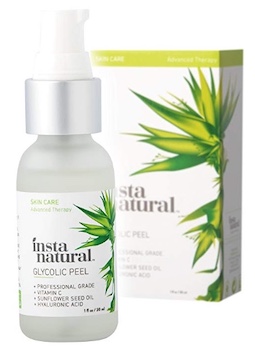
Active ingredients: Vitamin C and hyaluronic acid (HA).
Pros
- Reduces oil and breakouts.
- Accelerates the shedding of old skin cells to reveal a new, fresh layer of skin.
- Decreases the appearance of discoloration and wrinkles.
Cons
- The formulation is quite thin, and can easily run off the fingers during application.
- Some mild inflammation and tingling may occur.
Caudalie Glycolic Peel
This skin renewing treatment offers the benefits of both a scrub and a peel. Papaya offers additional exfoliating without irritation.

Best at: Clears the complexion, tightens pores and gives you immediate radiance while gently exfoliating the skin.
Pros
- Users report a radiant glow after use.
- Fades age and sun spots.
- Gentle formulation doesn’t strip or dry out skin.
Cons
- This formulation may not be as effective for those already using AHAs or retinols.
Perfect Image Glycolic Acid 30% Peel
With an impressive 30% concentration of glycolic acid, Perfect’s formulation penetrates deep into the skin to encourage thorough exfoliation of old skin cells. This mighty peel also contains retinol, which encourages collagen production to plump skin.
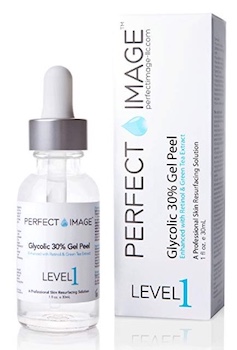
Active ingredients: Enhanced with Retinol and Green Tea Extract.
Pros
- Soothing chamomile and green tea extract softens skin.
- Up to 20 peels included in one bottle.
- Includes cucumber extract which is antioxidant-rich and moisturizing.
Cons
- Irritation or redness may occur directly after use.
- Some users report that breakouts have appeared several days after use.
The Best Glycolic Acid Toners
Toners are fast penetrating liquids that lightly exfoliate the skin. Toners sweep away dead skin cells, preparing the skin’s surface to absorb moisturizers and serums.
Glycolic acid toners include glycolic acid to supercharge the exfoliation process, leaving the skin extra clean and bright. Regular use means you can safely benefit from the exfoliating properties of glycolic acid every day.
Peter Thomas Roth 8% Glycolic Solutions Toner
The innovative addition of witch hazel helps to reduce oil, while glycolic acid exfoliates and freshens the skin. This formulation is perfect for all skin types, even sensitive skin.
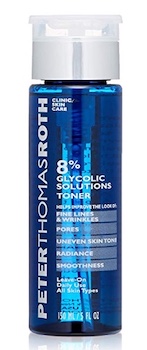
Best at: Reduces appearance of pores, evens skin tone, rehydrates, soothes and calms skin.
Pros
- Fine lines and wrinkles are reduced with daily use.
- Skin tone is brighter and more even.
- Dirt and impurities are removed.
Cons
- Denatured alcohol in the formulation may dry the skin out.
- Skin may become sensitized with overuse–a little goes a long way.
Mario Badescu Glycolic Acid Toner
Possibly the most famous glycolic acid toner, Badescu’s formulation has won legions of dedicated fans. Grapefruit extract, a natural source of vitamins A, C and E, works in concert with glycolic acid to double the AHA power.
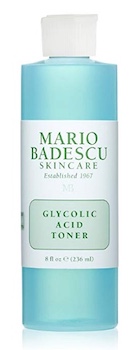
Best at: Helps accelerate skin cell turnover for younger-looking skin.
Pros
- Alcohol-free.
- Aloe leaf extract offers hydrating, soothing properties.
- Skin cell turnover is accelerated.
Cons
- The perfume may irritate highly sensitive skin.
- Results may take longer to appear than other formulations due to lower glycolic acid content (2%).
Pixi Glow Tonic Exfoliating Toner
Formulated with 5% glycolic acid, this products offer strong exfoliating properties without harsh drying. The inclusion of aloe offers hydration, while witch hazel helps to eliminate unwanted oil.

Active ingredients: Aloe Vera and Ginseng.
Pros
- Alcohol-free.
- Ginseng invigorates the skin.
- Not tested on animals.
Cons
- Artificial colors and fragrances may irritate sensitive skin.
- Some users notice slight redness after application.
The Best Glycolic Acid Peel Pads
Glycolic pads are ideal for those who want to integrate glycolic acid into their skincare regime without the downtime of a peel.
Application is rapid and straightforward. Simply take a pad saturated with glycolic acid, swipe over the face, apply a neutralizing pad or hydrating balm, and you’re good to go.
Murad Rapid Resurfacing Peel
This dermatologically designed formulation has been pre-applied to a textured towelette for quick and efficient use. An impressive 87% of users reported smoother skin overnight. Vitamin C also helps to brighten skin.

Pros
- Quick to apply.
- Pomegranate extract offers anti-aging benefits.
- Uneven skin tone and age spots are reduced.
Cons
- Some users note that the formulation is quite drying.
- Redness, similar to sunburn, may be experienced directly following use.
Exuviance Glycolic Acid Peel Pads
Exuviance Peel Pads are easily swiped over the face in a two-step procedure. Step one: apply the activator pad containing glycolic acid and other potent ingredients such as mandelic acid. Step two: apply the neutralizer pad to remove the active ingredients and prepare the skin for moisturization.
Best at: Improves skin tone, texture and radiance.
Pros
- In a clinical study, 100% of users noted an improvement in fine lines and wrinkles after one month of bi-weekly use of the pads.
- Ninety-four percent noticed improved skin tone, texture and radiance.
- Results become apparent in as little as one month.
Cons
- Some users note that the formulation can be quite drying.
Dermaflash Flash and Glow Resurfacing Peel Pads
These pads combine salicylic acid with glycolic acid to offer the benefits of both AHA and BHA molecules. Salicylic acid helps to shed dead skin and smoothen the remaining skin, while the glycolic acid works on fine lines, acne and blackheads.
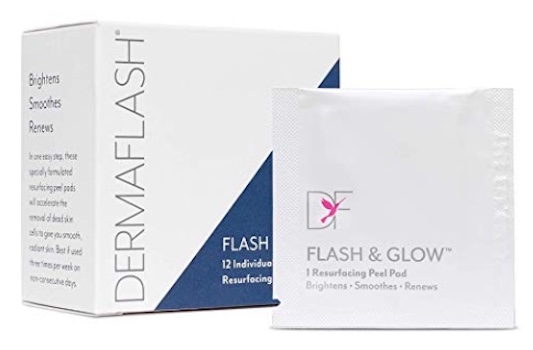
Best at: Gently exfoliate and brighten skin, revealing a smoother, healthier, more youthful-looking complexion.
Pros
- The pads are saturated with product, allowing for generous application.
- Safe for those with sensitive skin.
- The formulation helps to reduce breakouts.
Cons
- Sun sensitivity may be heightened; limit sun exposure during use.
- Some tingling and redness may occur following use.
Glycolic Peel for Acne
Glycolic acid is a powerful treatment for those with acne. Oily or pimple-prone skin often has slower rates of natural exfoliation, rendering it prone to clogged pores that ultimately result in acne, blackheads or whiteheads. Glycolic acid peels accelerate exfoliation, helping to sweep away the dead skin cells and dirt that contribute to acne.
Glycolic Acid Aftercare
Products containing glycolic acid can sometimes cause short-term tingling or sensitivity. Some products may also cause the skin to feel dry: applying a nourishing moisturizer or serum following use can help alleviate any tightness or dryness.
It is essential that you apply a broad-spectrum sunscreen after applying glycolic acid, as new skin cells are particularly vulnerable to sun damage.
Takeaway
Glycolic acid represents an effective, natural method of sloughing off old skin cells to reveal a youthful, more radiant layer of skin. Based on your preference, glycolic acid can be integrated into your skincare regime as a skin peel, toner or exfoliating pad.
Regular use of glycolic acid will provide an improvement in issues such as fine lines, wrinkles and dull skin, and reduce blackheads, acne, hyperpigmentation and scarring.
For more visible issues that penetrate deeper into the dermis, a chemical peel performed by a dermatologist may produce more noticeable results. You can learn if a chemical peel might be a more suitable option for you by meeting our medical review team.





